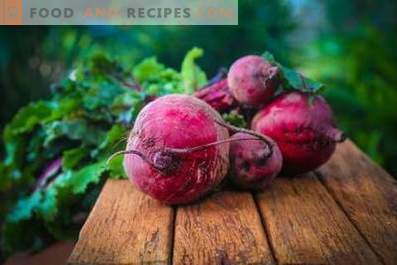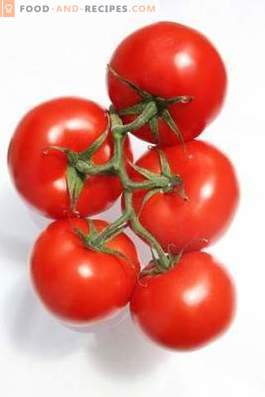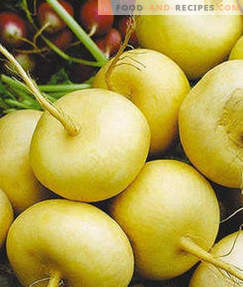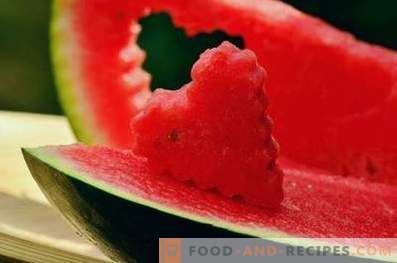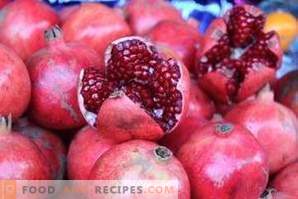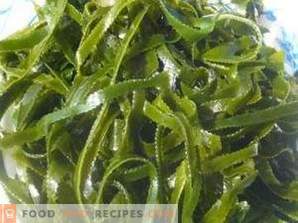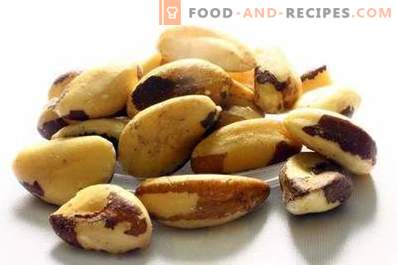
Pineapple is a perennial tropical plant belonging to the Bromeliad family. Homeland of this culture are arid plateaus of the central part of Brazil. In the XVI century, the Portuguese, who explored the American continent, discovered this amazing plant and transported it to India and Africa. This culture came to European territory much later - in the middle of the 17th century.
In Europe, pineapples for two centuries were grown in greenhouses. However, in the 19th century, Europeans had the opportunity to transport fresh, tasty and juicy fruits by steamboats directly from plantations located in tropical countries. As a result, the greenhouse cultivation of this plant in Europe has fallen into decay.
Today, the largest pineapple plantations are located on the Hawaiian Islands: local farmers account for up to a third of the world production of these fruits. In addition, Brazil, Thailand, Costa Rica and the Philippines are among the leaders in growing these juicy and fragrant fruits. In some countries, the plant is cultivated to obtain spinning fibers from its leaves.
Pineapple - herbaceous land plant up to 75 cm tall, having a stem covered with prickles and narrow long succulent leaves. The accessory roots of this culture develop in the sinuses of its leaf plates and absorb moisture accumulating there. Over time, a peduncle is formed in the center of a fully formed leaf rosette, covered with a huge variety of bisexual flowers. After a three-week flowering at the site of the peduncle, large yellowish-brown seed heads appear, resembling a coniferous cone. In the upper part of the fruit, a kind of “tuft” of juicy vegetative leaves is formed. The skin of a ripe pineapple has a uniform brownish-golden hue and a light, pleasant aroma, and the vegetative leaves of a ripe fruit are easily pulled out from the “tuft” located at its top. Excessively strong sweet smell, the presence of brown, green or light spots on the peel, as well as the darkening of the veins between the scales of the seed fruit indicate that the fruit did not have time to ripen or began to rot.
Pineapple seedlings are a valuable food. The sour-sweet, fragrant flesh of the fruit of this plant is eaten raw (raw) and in the form of canned food, dried, used in the confectionery industry to make jams, sweets, jam and candied fruits. Along with this, pineapple fruits, rich in vitamins, useful macro- and microelements, are actively used in medicine to combat the most diverse pathologies.
Nutritional value of pineapple and vitamins in fruit composition
The nutritional value of pineapple is difficult to overestimate. Fresh fruits of this plant contain simple sugars (mainly sucrose), organic acids, fiber, highly active proteolytic enzymes, vitamins and other substances necessary for the human body.
Nutritional value 100 g pineapple:
- 0, 42 g of proteins;
- 0, 14 g of fat;
- 11, 83 g of carbohydrates;
- 0, 97 g of fiber;
- 0, 73 g of organic acids;
- 85, 49 g of water;
- 11, 83 g of disaccharides and monosaccharides;
- 0, 31 g of ash.
Vitamins per 100 g of pineapple:
- 0, 029 mg of beta-carotene;
- 3, 09 micrograms of retinol equivalent (vitamin A);
- 0, 39 mg of vitamin PP;
- 0, 062 mg of thiamine (B1);
- 0, 026 mg riboflavin (B2);
- 0, 24 mg of pantothenic acid (B5);
- 0, 16 mg pyridoxine (B6);
- 5, 39 μg of folic acid (B9);
- 0, 24 mg of vitamin E;
- 11, 23 mg of ascorbic acid (C);
- 0, 43 mg of niacin equivalent.
Energy value of pineapple
Despite the presence of sugars, pineapple is recognized as a low-calorie diet product. The juicy flesh of this fruit is often included in the weight-loss diet menu.
- Caloric value of 100 g of pineapple - 51, 6 kcal.
- Caloric content of 1 fruit of medium size (1, 5 kg) - 774 kcal.
- Calories of canned pineapple - 59, 8 kcal.
- Caloric content of pineapple juice - 48, 7 kcal.
- Caloric content of candied pineapples - 90, 6 kcal.
- Caloric content of pineapple compote - 72, 1 kcal.
- Caloric content of dried pineapple - 356, 9 kcal.
- Caloric content of pineapple jam - 252, 3 kcal.
High-calorie foods cooked with added sugar (jam, jams, etc.) are not recommended for people suffering from obesity.
Macro and trace elements in pineapples
Pineapple pulp is a natural source of a number of useful macro- and microelements.
Macroelements per 100 g of pineapple:
- 133, 9 mg of potassium;
- 17, 38 mg of calcium;
- 13, 29 mg of magnesium;
- 8, 71 mg of phosphorus;
- 0, 92 mg of sodium.
Trace elements in 100 g of pineapple:
- 0, 31 mg of iron.
Useful properties of pineapple
- Pineapple juice is an excellent remedy for colds. This tasty and aromatic drink contains substances that contribute to the dilution and accelerated removal of sputum, eliminating unproductive cough, eliminating inflammatory processes in the nasopharynx and supporting the immune forces of the body.
- Pineapple helps to cope with violations of the gastrointestinal tract. The flesh of this fruit not only perfectly satisfies the feeling of hunger, but also significantly increases the production of digestive enzymes. A glass of pineapple juice, drunk after a hearty meal, helps to prevent the occurrence of heaviness in the stomach.
- The proteolytic enzyme bromelain, which is present in the pulp of the fruit, promotes protein breakdown and activates the flow of amino acids into the blood, which are necessary to maintain muscle tissue in a normal state. In addition, this substance helps the body to block the spread of inflammatory processes and successfully cope with diseases of the joints.
- Substances that are part of the fruit, prevent the formation of cholesterol deposits on the vascular walls, dissolve the already formed atherosclerotic plaques. Regular inclusion in the diet of the pulp of this fetus helps prevent the development of cardiac arrhythmias, myocardial infarction, strokes and other cardiac diseases.
- Eating pineapple juice helps improve memory. Persons whose work is related to the processing of a significant amount of information, it is recommended to drink at least two glasses of this drink during the week.
- Pineapple is a natural anesthetic that can significantly alleviate pain in the joints and muscles.
- Regular inclusion in the diet of the pulp of this unique fetus contributes to the gradual dilution of blood. Thus, this fruit helps to prevent the occurrence of thrombosis, prevent varicose veins, minimize the risk of developing thrombophlebitis.
- Pineapple helps to remove excess fluid from the body, is an excellent decongestant.
- Pineapple juice has a positive effect on the state of blood vessels. Daily use of this drink helps to normalize blood pressure.
- Useful substances present in the pulp of the fruit help strengthen the nervous system, avoid psycho-emotional overstrain, reduce the negative effects of stress on the body.
- It has been found that eating pineapple helps minimize the risk of developing malignant tumor tumors. The composition of this fruit contains substances that can prevent the appearance of metastases in people with cancer, and slow down the process of atypical cell division.
- Consuming pineapple juice helps speed wound healing.
- Pineapple is an effective remedy for corns. In order to get rid of the cornified tissue, it is enough to pinch a slice of this fruit to the affected skin area for 10-11 hours.
- Pineapple juice helps to deal with the unpleasant symptoms of motion sickness.
- Dishes prepared on the basis of fruit pulp help to increase potency in men, normalize the composition of sperm, prevent the development of a number of disorders in the male urinary system.
- Pineapple pulp is a great anti-depressant. Regular inclusion in the diet helps to avoid sudden mood swings.
- Pineapple slows down the aging of tissues and contributes to the rejuvenation of the body. Extracts from this plant are actively used in cosmetology for the manufacture of masks, emulsions and other means that prevent the appearance of wrinkles and improve the overall condition of the skin.
Contraindications to the use of pineapples
- Pineapple is a potential allergen. For this reason, individuals who are prone to allergies should exercise extreme caution when incorporating this fruit into the diet.
- Pineapple pulp contains significant amounts of organic acids. For this reason, people with diagnosed peptic ulcer, gastritis and other diseases caused by high acidity of gastric juice should be prevented from eating this fruit. It should also be remembered that the acids contained in pineapple, can have a negative impact on the state of tooth enamel. Therefore, after eating this fruit, it is advisable to neutralize the acidic environment by rinsing the mouth with water, a special balm, or brushing your teeth.
- Pregnant women should be especially careful when eating pineapples. The composition of this fetus contains substances that can activate the contractility of the uterus and provoke preterm labor. It is for this reason that it is recommended to consume no more than 150 g of fruit pulp during the day during gestation.
